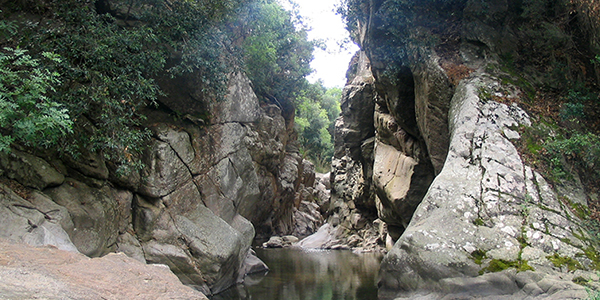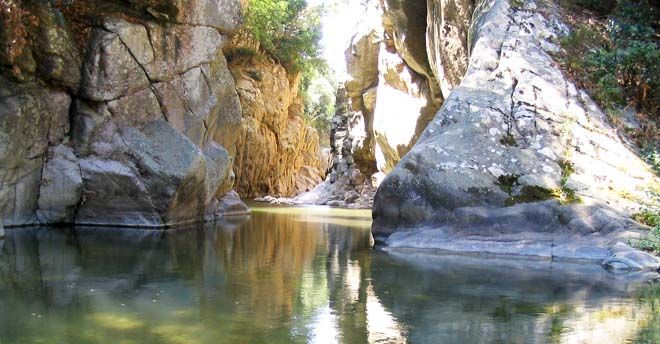


The Caronia Mill, located in the beautiful gorge of "Passo del Corvo," along the right bank of the Caronia Stream, is managed by the NAturalistic Association "I Nebrodi."

The architectural features of the structure, as well as the scenic and natural beauty of the site and the route leading to it, make it a destination of special interest. It can be easily reached from the S.S. 113, through an old municipal road that runs along the banks of the watercourse for a good part; at a bridge it then proceeds to the left, climbing halfway up the slope for a few dozen meters and alternating uphill and downhill stretches.

Along the route one encounters a wide variety of herbaceous and shrub vegetation, much of it typical of riverine environments (tamarisk, oleander, willows), and of Mediterranean scrub (mastic, broom, euphorbia) as well as, closer to the Mill, also of the arboreal type, with the presence of cork, holm oak, downy oak and a few ash trees.
Equally interesting are the geological and geomorphological peculiarities observable along the route, with interesting stratified quartzarenitic outcrops. The millennia-long erosive action of water can be particularly appreciated at the Mill, where water has etched and shaped the steep, rocky slopes that make up the gorge.
Construction and functional characteristics
The Caronia Common Mill, built in 1863, is one of three mills originally located along the Caronia Creek; of the others, however, only a few ruins remain, but their presence testifies to the presence of a flourishing agricultural tradition in this Nebrodi district at the beginning of the last century. It retains all the elements that enabled its operation at the beginning of the last century for the production of flour: collection tank, ramp, shovels, millstones, hopper.

The architectural layout features a typical structure of so-called "ramp" mills, the constituent elements of which are represented by:
- collection channel
- adduction channel
- ramp
- "garraffo" room
- working rooms
The collection channel, made of stone and with a rectangular cross section, allowed water to be conveyed from the stream to a large basin located upstream of the structure; in its present state only a few meters of the channel are preserved, but originally it must have been much longer.

The adduction channel,orthogonal to the collection channel, channelled the water from the tank to the ramp, which consisted of another very inclined channel, with a truncated cone section, whose purpose was to determine the "jump in elevation" of the water (for a difference in height of about 12 meters), which flowed, thus, at great speed onto the blades of the wheel, housed in the arraffo room. The principle of operation can be compared to that of a penstock of a hydroelectric power plant, in which the energy of the water drives the turbine.

The rotation of the wheel, which, as mentioned, has a vertical axis, made it possible to operate the millstone, located in the room above, which was used as the actual working environment.
The grain to be ground was conveyed between the millstones through a hopper; the rotation of the upper millstone crushed and ground the grains of wheat, transforming them into flour, which was collected on a wooden cupboard placed in front of the millstone.

Mulino di Caronia I NEBRODI
Address: C.da Passo del Corvo. Strada comunale Angara - Caronia
Phone: 3485431229
Site:
http://www.inebrodi.it/Location inserted by
Alessandro Licciardello